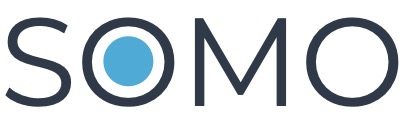Citizen Generated Data (CGD)
1. The Lifecycle of a CGD Project
A Community-Generated Data (CGD) project follows a structured lifecycle that guides the project from conception to closure. Understanding each stage is critical to successfully implementing and managing such initiatives.
A. Conception
This is the initial stage where the project idea is conceived. It involves identifying a community need or problem that can be addressed through community-generated data. This phase typically includes:
- Problem Identification: Understanding the specific issue the community is facing (e.g., lack of clean water, poor waste management).
- Stakeholder Engagement: Consulting with key stakeholders, including community members, local authorities, and NGOs, to ensure the project aligns with actual community priorities.
- Preliminary Research: Conducting background research to see if similar CGD projects have been implemented and what lessons can be learned.
Example: In an urban community experiencing rising crime rates, stakeholders might identify the need for real-time data on neighborhood safety and propose a CGD project to collect this data.
B. Planning
The planning phase is critical as it establishes the roadmap for the project's success. Detailed project plans, including timelines, budgeting, resource allocation, and risk assessments, are developed. This stage includes:
- Setting Objectives: Defining clear and achievable goals for the project using the SMART framework.
- Developing a Project Plan: Creating detailed project plans that outline the activities, resources, budget, and timelines required to achieve the objectives.
- Risk Management: Identifying potential risks and developing mitigation strategies to minimize disruptions.
Example: A community organization might create a detailed project plan for a CGD project to track water quality by using citizen-collected data through mobile apps.
C. Execution
This phase involves the actual implementation of the project according to the plan. Key activities include:
- Data Collection: Mobilizing community members to collect data using predefined tools and methods (e.g., surveys, mobile apps).
- Resource Management: Ensuring that all necessary resources, such as funding, equipment, and personnel, are available and effectively utilized.
- Coordination and Communication: Keeping all stakeholders informed and engaged throughout the process.
Example: In a CGD project focused on urban air quality, community members might use low-cost sensors to collect air pollution data across different areas.
D. Monitoring and Evaluation
Monitoring involves tracking the project's progress to ensure it is on course and meeting its objectives. Evaluation assesses the project’s overall effectiveness and impact.
- Ongoing Monitoring: Regularly assessing whether the project is adhering to its timeline, staying within budget, and achieving its goals.
- Data Analysis: Analyzing the data collected by the community to generate insights and inform decision-making.
- Impact Assessment: Evaluating the broader impacts of the project, such as improved community services or better-informed policies.
Example: In a CGD project monitoring deforestation, data collected by community members is analyzed to assess whether forest conservation goals are being met.
E. Closure
The closure phase marks the formal conclusion of the project, ensuring that all activities are completed, and lessons learned are documented. This phase includes:
- Final Reporting: Creating a final report that details the project’s outcomes, lessons learned, and recommendations for future projects.
- Handover: If applicable, transferring ongoing responsibilities to a community group or organization for sustained impact.
- Celebrating Success: Acknowledging the contributions of the community and stakeholders, and sharing the project’s achievements.
Example: After completing a CGD project on waste management, the project team produces a report summarizing the data collected, the reduction in illegal dumping, and future recommendations.
2. Tools and Methods for Project Planning
Effective project planning is essential for the success of CGD projects. Several tools and methods are available to assist with the key aspects of project planning, including timelines, budgeting, resource allocation, and risk management.
A. Timelines
A well-constructed timeline ensures that the project remains on schedule and helps track progress toward project milestones. Key tools include:
- Gantt Charts: Visual representations of the project schedule, showing the start and finish dates for each task.
- Milestone Tracking: Identifying key points in the project (e.g., completing data collection) and tracking progress toward these milestones.
Example Tool: Microsoft Project or Trello can be used to create Gantt charts and track project progress in real time.
B. Budgeting
Accurate budgeting ensures that the project has the necessary financial resources to achieve its objectives. Budget planning should account for:
- Costs: Estimating the costs for equipment, personnel, transportation, training, and other resources.
- Contingency Funds: Allocating extra funds for unforeseen expenses or emergencies.
Example Tool: Excel or Google Sheets can be used to create detailed budgets that track spending across different project categories.
C. Resource Allocation
Resource allocation involves distributing the available resources (people, equipment, funds) effectively to meet the project’s objectives. This includes:
- Human Resources: Assigning tasks to team members based on their skills and expertise.
- Equipment and Materials: Ensuring that all necessary tools (e.g., mobile data collection devices, sensors) are available when needed.
Example Tool: Resource allocation tools such as Asana or Monday.com allow for efficient tracking and assignment of tasks and resources.
D. Risk Management
Risk management involves identifying potential challenges or obstacles and planning how to address them. Key components include:
- Risk Identification: Listing all potential risks (e.g., lack of community engagement, funding shortages).
- Risk Mitigation: Developing strategies to minimize or eliminate risks (e.g., engaging stakeholders early or applying for additional grants).
Example Tool: Risk matrices or project risk management tools like Smartsheet can help visualize risks and track mitigation strategies.
3. The Importance of Flexibility and Iterative Design in Community Projects
Flexibility and iterative design are essential to the success of community projects, particularly those involving CGD. The dynamic nature of community needs, data collection processes, and stakeholder involvement requires a project design that can adapt as conditions change.
A. Flexibility
- Community Context: Community dynamics are often fluid, and priorities may shift as new issues arise. CGD projects must be flexible enough to accommodate these changes without jeopardizing the project’s overall objectives.
- Data Adjustments: As data is collected, it may reveal new challenges or opportunities. Flexibility allows the project team to adjust data collection methods, timelines, or objectives accordingly.
Example: If a CGD project initially focused on waste collection identifies a more urgent issue of water contamination, the project can pivot to address this new need.
B. Iterative Design
- Feedback Loops: Iterative design involves incorporating regular feedback loops into the project, allowing for ongoing adjustments based on community input, data insights, or emerging issues.
- Prototype Testing: Piloting small-scale versions of the project before scaling up can help identify potential problems early on, reducing the risk of failure.
Example: A CGD project using mobile apps to collect health data may iteratively test different app designs with small groups of users to ensure usability before full deployment.
C. Benefits of Flexibility and Iteration
- Improved Outcomes: By remaining responsive to changes, CGD projects are more likely to meet their objectives and produce meaningful, actionable data.
- Increased Community Trust: When community members see that their input is valued and that the project can adapt to their evolving needs, they are more likely to remain engaged and supportive.


